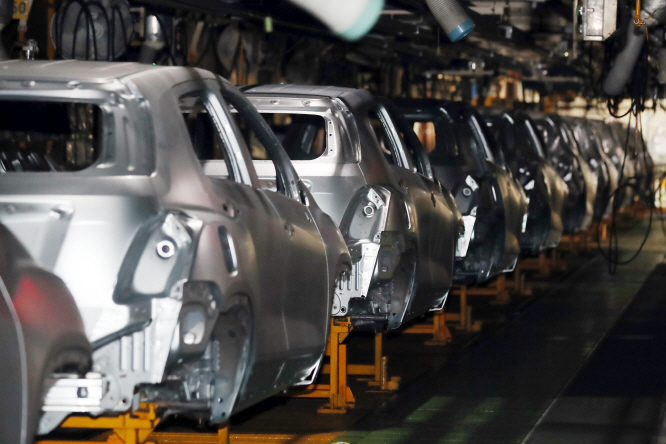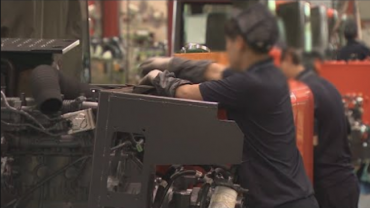
This photo taken Feb. 6, 2020, shows Hyundai Motor’s main Ulsan plants’ port ahead of their suspension. (Yonhap)
SEOUL, March 17 (Korea Bizwire) — South Korean carmakers are likely to post poor earnings results for the first quarter due to the escalating fallout from the coronavirus pandemic, analysts said Tuesday.
The country’s five carmakers — Hyundai Motor Co., Kia Motors Corp., GM Korea Co., Renault Samsung Motors Corp. and SsangYong Motor Co. — have already suffered several weeks of output disruptions after suppliers in China halted production amid the spread of COVID-19.
The coronavirus pandemic prompted many countries to impose restrictions on public movement, which analysts said would hurt vehicle sales in global markets.
“In particular, lower demand in the United States and Europe due to the spreading coronavirus outbreak will have a major impact on Korean carmakers in the first quarter,” Kwon Soon-woo, an analyst at SK Securities Co., said over the phone.
Declining oil prices will also squeeze vehicle demand in oil-rich emerging markets such as Russia, Brazil and the Middle East, the analyst said.
Confirmed coronavirus cases have topped 182,000 around the world, with the death toll exceeding 7,100.
Some brokerages recently revised down Hyundai and Kia’s global sales outlooks and their target stock prices.
Korea Investment & Securities Co. said the country’s two biggest carmakers will not achieve their sales targets for this year.
“The coronavirus is pouring cold water on Hyundai and Kia, which aim to boost sales in the U.S. and other major markets this year with a set of new vehicles,” Kim Jin-woo, an analyst at Korea Investment & Securities, said.
The new models include the GV80 SUV and G80 sedan to be launched under Hyundai’s independent Genesis brand, Hyundai’s Tucson SUV and Kia’s Sportage SUV and Carnival van to be released in the second half.
Hyundai and Kia sold a combined 7.19 million autos in global markets last year, missing their annual sales target of 7.55 million units on lower demand in China, the world’s biggest automobile market.
In 2020, they are aiming to sell 7.54 million autos by launching a series of fully revamped models in major markets.
The brokerage expected Hyundai and Kia to sell a combined 7 million units this year, while revising down Hyundai’s 12-month target price to 150,000 won from 185,000 won and Kia’s to 42,000 from 50,000 won.
In the past week, Hyundai shares plunged 21 percent to 87,200 won and Kia stocks plummeted 22 percent to 27,100 won, underperforming the broader KOSPI’s 16 percent loss.
For the October-December quarter, Hyundai posted a net profit of 851.2 billion won (US$730 million), shifting from a net loss of 203.3 billion won a year earlier on an improved product mix and a weak won.
Kia’s net profit more than tripled to 346.4 billion won from 94.3 billion won during the same period.
The three other carmakers are also expected to report earnings results that are worse than previously anticipated in the first quarter, as they are heavily reliant on overseas demand.
SsangYong Motor’s net losses deepened to 155.9 billion won in the fourth quarter from 4 billion won a year earlier due to weaker demand for its models.
GM Korea and Renault Samsung are not listed on the stock exchange. Their sales in the fourth quarter continued to fall due to a lack of new models and lower demand for their existing vehicles.
(Yonhap)







